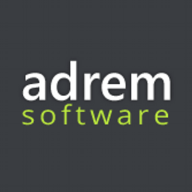

NetCrunch and Check Point Security Management are both leading solutions in the network monitoring and security management space. Check Point Security Management is seen as superior due to its comprehensive features, though NetCrunch offers favorable pricing and support.
Features: NetCrunch offers user-friendly monitoring capabilities, extensive integration options, and flexibility for various environments. Check Point Security Management provides advanced threat prevention, granular policy controls, and high-security standards that attract users seeking robust security solutions.
Room for Improvement: NetCrunch users suggest enhancements in reporting functionalities, real-time analysis, and expandability. Users of Check Point Security Management seek improvements in customization options, performance, and user interface.
Ease of Deployment and Customer Service: NetCrunch is praised for straightforward deployment and responsive customer service, making it accessible for start-ups. Check Point Security Management, although complex to deploy, offers comprehensive documentation and professional support, suitable for those needing detailed guidance.
Pricing and ROI: NetCrunch is commended for its cost-effectiveness, delivering favorable ROI with manageable setup costs. Check Point Security Management, although more expensive, justifies its price by meeting enterprise-level security needs and providing significant value.

Check Point Security Management is an advanced security management platform for enterprises. The platform integrates all aspects of security. A single platform manages the entire infrastructure, from data centers to private/public cloud deployments.
Check Point Security Management is a reliable and easy-to-use security platform. It integrates all aspects of your security environment to strengthen the security posture without impairing productivity. The system has a layered policy model. This means the security policy can be separated into layers for network segmentation. Different administrators can manage different policies. The policy layer automates the tasks.
The platform is extensible, scalable, and integrates easily with orchestration systems and change management.
Basic Components of the Infrastructure
The smart console offers several advantages. Changes in security policies and logs can be done with a click. You can navigate from an item within a log to the policy. There are also built-in multi-language support and accessibility features.
1. Security Management Server: The server manages security gateways with set security policies and monitors security events on the network.
The automation server is an integrated part of the management server. The API server is active by default on servers with 4 GB of RAM or more and on standalone servers with 8 or more GB of RAM.
The automation server communicates with the management server the same way as the Smart Console. This architecture allows the same validation errors and warnings to be presented when using an automation session.
The same audit logs generated using the Smart Console are also generated using an automation session. If you have a multi-domain environment, there is only one automation server that monitors all the IP addresses of the multi-domain management server.
2. Security Gateway is placed at the edge of the network. It monitors and filters traffic and enforces security policies.
Logging, Event management, and Monitoring
With Check Point Security Management, logging, reporting, event management, and monitoring are integrated. The platform features widgets and chart templates that optimize visibility. One of the best features is the one-click exploration. This simplifies going from a general overview to specific event details.
Benefits of Check Point Security Management
The unified console also means a single policy for users, data, applications, and networks. The granularity control helps accelerate administration processes. This feature, together with automation, is key to achieving reduced operational overhead. Security teams can automate tasks and even create self-service security web portals with the Check Point Security Management platform.
Threat management is fully integrated, with reporting, logging, and monitoring all in one dashboard. This provides full visibility into the security of the network.
Security Management Suite
The Security Management Suite consists of the following modules:
Reviews from Real Users
A Network Security Engineer/Architect at a tech services company says, "The features we like and find the most valuable are the ways we can manage the policy, create objects, and drag and drop objects in our daily operation. It makes our daily operation on the firewall management much easier than going, for example, to one firewall, then going to the other."
"The management API is the best new feature for me. It allows us to further automate our customers' automated server ordering," says a System Engineer Network & Security at OTTO GmbH & Co KG.
A Senior Infrastructure Services Specialist at St.George Bank Limited adds that "The solution is ideal for use and deployment in a large infrastructure environment."
NetCrunch is the complete network monitoring solution for monitoring traffic, topology, devices, systems, logs, and services. It's policy, and template-based configuration makes managing thousands of nodes a breeze. It automatically generates layer-2 maps and manages monitoring dependencies. NetCrunch supports major operating systems, virtualization platforms, and the Cloud. Complete SNMP support with 8,700+ MIBs included and a built-in MIB compiler.
We monitor all Log Management reviews to prevent fraudulent reviews and keep review quality high. We do not post reviews by company employees or direct competitors. We validate each review for authenticity via cross-reference with LinkedIn, and personal follow-up with the reviewer when necessary.